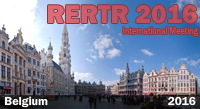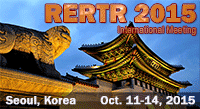Abstracts and Available Papers Presented at the
2002 International RERTR Meeting
Regional dual-purpose cask for the storage and transport of research reactor spent fuel
Miguel Mattar Neto*, Rogério Pimenta Mourão**
*Comissão Nacional
de Energia Nuclear
IPEN-CNEN/SP, São Paulo, Brazil
**Comissão Nacional
de Energia Nuclear
CDTN-CNEN/MG, Belo Horizonte, Brazil
ABSTRACT
Taking into account that the deadline set for the American program of taking back foreign research reactor spent fuel containing U.S.-supplied enriched uranium – the year 2006, the five Latin American countries operating this type of reactor – Argentina, Brazil, Chile, Peru and Mexico – decided to launch an IAEA-sponsored project aiming at establishing local expertise in managing this material. Among the alternatives for an extended storage of the disused elements, the use of a dual purpose cask for both storage and transport is being seriously considered, due to its appealing advantages: expansion of the plant storage capacity without the burden of costly modifications of the reactor building, flexibility, in that the used fuel can be stored in situ or in other facilities outside the reactor site and the preparation of the elements for the future transportation to the final repository.
At the present stage, the cask conceptual design is being developed at the Brazilian participating institutes – CDTN and IPEN. The basic idea is to work on a concept which meets the needs and particularities of each country, in terms of fuel type and dimensions, reactor building handling and transport capabilities, expected spent fuel production, etc, and also be approved by the licensing authorities of all countries involved.
The preliminary concept is of a cylindrical cask with an internal cavity, a basket to hold the fuel elements and external shock absorbers. The main body is a sturdy structure with external surfaces of stainless steel and lead filling, which provides the necessary shielding. A double lid system with gaskets and inspection ports guarantees containment and control over any possible gas leakage. Due to the different fuel types used in Latin American research reactors – both MTR and TRIGA fuels are used – and to allow for the storage and transportation of processed fuel, different internal basket designs will be developed. The external shock absorbers are filled with high density rigid polyurethane foam.
An upper weight cap of 10 t was established for the design in order to preserve the maneuverability of the cask in the different reactor sites.
![]() PDF version available
PDF version available
DOWNLOAD full paper in PDF format.
Contact:
Dr. Miguel Mattar Neto
Head, Structural
Mechanics Division
IPEN/CNEN
Travessa R, 400
Cidade Universitária 05508-900
São Paulo, SP,
Brazil
Phone: (55 11) 3816
9437
Fax: (55 11) 3816
9428
E-mail: [email protected]




